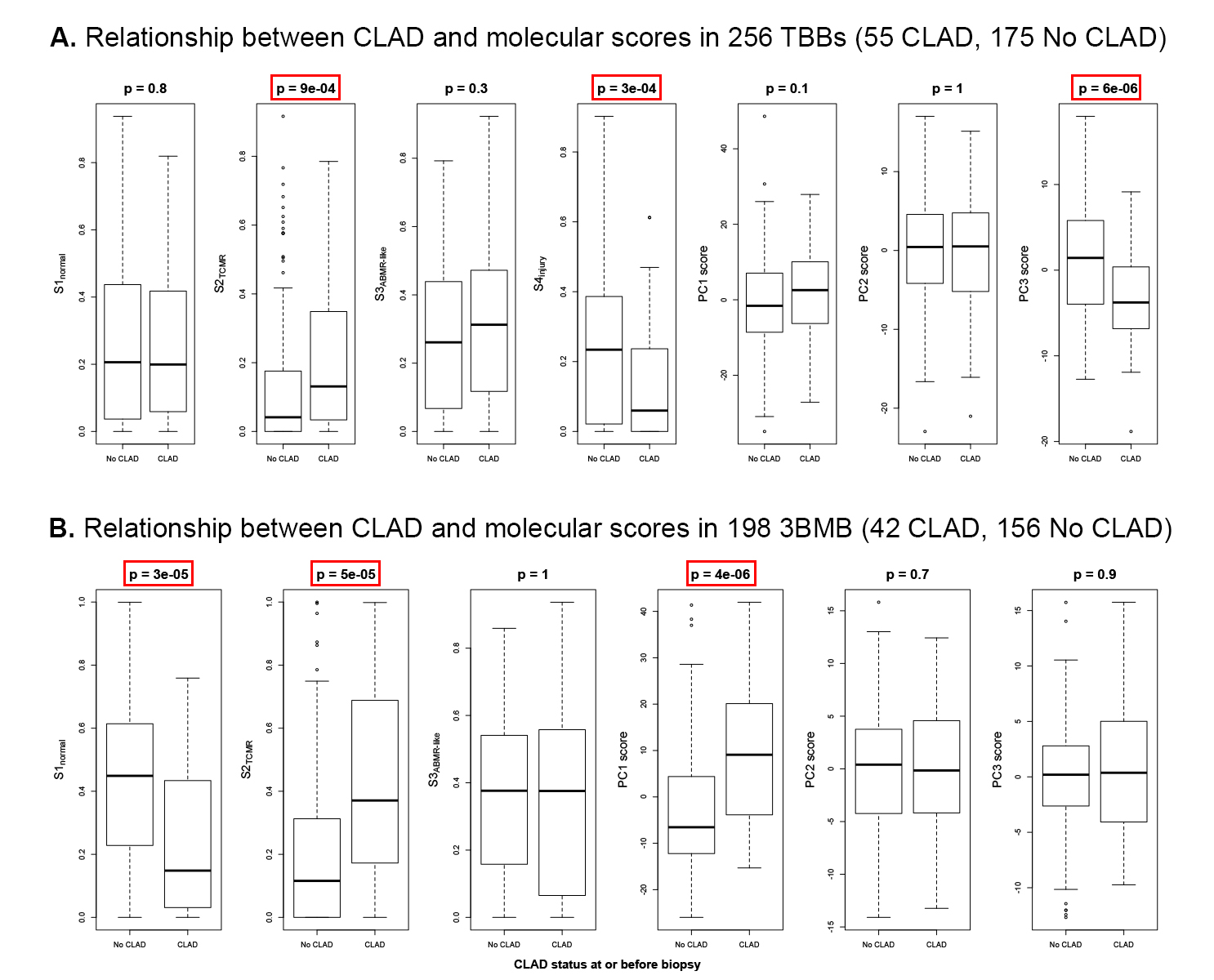The Molecular Features of Chronic Lung Allograft Dysfunction (CLAD) in Transbronchial and Endobronchial Mucosa Biopsies
1University of Alberta, Edmonton, AB, Canada, 2ATAGC, University of Alberta, Edmonton, AB, Canada
Meeting: 2019 American Transplant Congress
Abstract number: C335
Keywords: Gene expression, Lung transplantation, Obilterative bronchiolitis
Session Information
Session Name: Poster Session C: Lung: All Topics
Session Type: Poster Session
Date: Monday, June 3, 2019
Session Time: 6:00pm-7:00pm
 Presentation Time: 6:00pm-7:00pm
Presentation Time: 6:00pm-7:00pm
Location: Hall C & D
*Purpose: Chronic lung allograft dysfunction (CLAD), the major long-term problem in lung transplantation, requires new strategies for prevention and management. However, CLAD is infrequently diagnosed by histology. We studied gene expression changes associated with CLAD in transbronchial biopsies (TBBs) and mucosal biopsies from the third bronchial bifurcation (3BMBs).
*Methods: From 7 centers in the INTERLUNG study (ClicicalTrials.gov: NCT02812290) 256 highly alveolated TBBs (55 CLAD) and 198 3BMBs (42 CLAD) were processed on microarrays. We studied relationships between CLAD (as diagnosed by the clinician) and molecular rejection scores (S1normal, S2TCMR, S3ABMR-like) in TBB/3BMB and S4injury in TBB) derived using unsupervised machine learning models based on rejection-associated transcripts identified in kidneys and validated in hearts. We examined gene ontology (GO) biological process involvement of the top 100 increased or decreased transcripts associated with CLAD vs no CLAD (corrected for time of biopsy post-tx).
*Results: In both TBBs and 3BMBs, decreased CLAD-associated transcripts were involved in parenchymal dedifferentiation-related GO processes. In 3BMBs, increased CLAD-associated transcripts were related to inflammatory GO processes. In TBBs, increased CLAD-associated transcripts related to parenchymal changes, e.g. collagen biosynthesis GO processes (Table 1).
Biopsies from CLAD patients had higher molecular S2TCMR scores in both TBBs and 3BMBs. S1normal was depressed and PC1 (rejection/inflammation) elevated in 3BMBs. The TBBs S4injury score inversely related to CLAD. PC2 (endothelial) and PC3 (injury-related) were not associated with CLAD (Figure 1).
*Conclusions: CLAD emerges as a distinct molecular process in 3BMBs and TBBs involving inflammation, dedifferentiation (function loss), and atrophy/scarring. Molecular assessment of 3BMBs represents a particularly promising opportunity to study the diagnosis and biology of CLAD more safely than with TBBs.
To cite this abstract in AMA style:
Parkes MD, Halloran KM, Chang J. The Molecular Features of Chronic Lung Allograft Dysfunction (CLAD) in Transbronchial and Endobronchial Mucosa Biopsies [abstract]. Am J Transplant. 2019; 19 (suppl 3). https://atcmeetingabstracts.com/abstract/the-molecular-features-of-chronic-lung-allograft-dysfunction-clad-in-transbronchial-and-endobronchial-mucosa-biopsies/. Accessed November 30, 2025.« Back to 2019 American Transplant Congress


